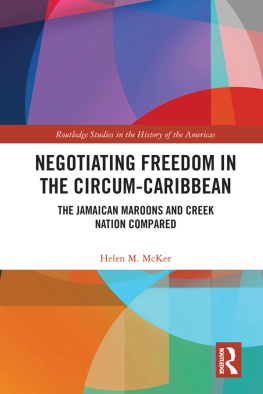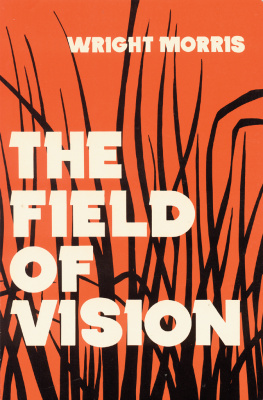A Man
of
Distinction
among
Them
A Man
of
Distinction
among
Them
Alexander McKee and
the Ohio Country Frontier,
17541799
LARRY L. NELSON
THE KENT STATE UNIVERSITY PRESS
Kent, Ohio, and London
1999 by The Kent State University Press, Kent, Ohio 44242
All rights reserved
Library of Congress Catalog Card Number 98-43050
ISBN 0-87338-620-5 (cloth)
ISBN 0-87338-700-7 (paper)
Manufactured in the United States of America
First paper edition 2000.
05 04 03 02 01 00 5 4 3 2
Material in chapter 1, Cultural Mediation, Cultural Exchange, and the Invention of the Ohio Frontier, was previously published in Ohio History, volume 105, WinterSpring 1996, and is reprinted with permission.
Library of Congress Cataloging-in-Publication Data
Nelson, Larry L. (Larry Lee), 1950
A man of distinction among them / Alexander McKee and the Ohio country frontier, 17541799 / Larry L. Nelson.
p. cm.
Includes bibliographical references (p. ).
ISBN 0-87338-620-5 (cloth: alk. paper)
ISBN 0-87338-700-7 (paper: alk. paper)
1. McKee, Alexander, ca. 17351799. 2. Indian agentsNorthwest, OldBiography. 3. Indian agentsCanadaBiography. 4. Indians of North AmericaWars17501815. 5. Northwest, OldHistory18th century. 6. Great Britain. Indian Dept.Officials and employeesBiography. I. Title.
E92.N45 1999
977.01092dc21
[b] 98-43050
British Library Cataloging-in-Publication data are available.
________
I first became interested in Alexander McKee while working for the Ohio Historical Society as the site manager at Fort Meigs State Memorial in Perrysburg. In 1988 I was asked to begin research on a proposed museum renovation project at another Ohio Historical Society property, Fort Recovery State Memorial in Mercer County, the site of Arthur St. Clairs 1791 defeat and the 1794 Battle of Fort Recovery. My initial research quickly revealed McKees important role in both actions. Moreover, I was surprised to learn that McKee conducted his affairs during the 1790s Indian war period from his storehouse at the foot of the Maumee River Rapids, only a short distance from my office at Fort Meigs. Further investigation indicated his long involvement with the Ohio Country Indian nations and his prominent participation in Great Britains attempt to win and then retain its imperial holdings throughout the Great Lakes region in the second half of the eighteenth century.
McKee was at the center of events along the Ohio frontier during the dozen or so years after the American Revolution that would broadly set the course of the regions history for many years to come. Indeed, these events would profoundly shape the destinies of the United States and Canada and of the areas native peoples for the next two centuries. This was nowhere more true than in his actions along the Maumee River during the 1790s. Anthony Waynes victory over the confederated Indian nations at Fallen Timbers in 1794 and the subsequent Treaty of Greenville the following year secured uncontested sovereignty over the Old Northwest for the United States. In the short term, the treaty terminated most Native American claims to the land, permitted the rapid, generally peaceful settlement of the region, and set the stage for the eventual admittance of Ohio, Michigan, Indiana, Illinois, and Wisconsin into the federal union. In the long term, the Old Northwest provided the natural resources, the water transportation systems, and the manufacturing basis that allowed the United States to emerge as a world industrial and economic power in the late nineteenth century and helped the nation maintain that status to the present day.
Alexander McKee was a pivotal figure in the events that would shape the regions future. McKee had been born and raised along the western border. He was the son of Thomas McKee, a well-known western Pennsylvania trader, and a Shawnee mother. Serving as a junior officer in the Pennsylvania Militia during the French and Indian War, McKee joined the British Indian Department under the tutelage of George Croghan in 1759. Acting as an interpreter and low-level diplomatic envoy to the western nations, he worked on the Crowns behalf during Pontiacs Rebellion, Bouquets Expedition, and Dunmores War. He also entered the fur trade during this period. By 1770 he had taken a wife from and established a home among the Shawnee bands that lived along the Scioto River Valley in present-day central Ohio. Sir William Johnson, the superintendent of Indian affairs for the Northern District, recognized the high esteem in which McKee was held among the Ohio Country tribes. When Croghan retired in 1771, Johnson appointed McKee to replace Croghan as Indian agent and to direct the Indian department commissary at Fort Pitt.
Remaining loyal to the British government during the Revolutionary era, McKee made his way to Detroit in 1778. Throughout the remainder of the war he engaged in a variety of military and diplomatic activities directed against the rebelling colonies. In 1778, McKee accompanied Henry Hamiltons expedition to Vincennes. Later he participated in Henry Birds 1780 campaign into Kentucky and the 1782 foray along the Ohio River to Bryants Station, which culminated in the defeat of American irregulars at the Battle of Blue Licks. Following the Revolution he became a prominent figure in local and colonial affairs, serving as a member of the Land Board of Hess, the provincial body that regulated settlement within Canadas lowerDetroit River region. He also was appointed a justice with the local Court of Common Pleas and lieutenant colonel in the Essex County Militia of Upper Canada. During the 17901795 Ohio Country Indian wars, McKee played a central role in defining and implementing Upper Canadas diplomatic and military response. Throughout the crisis he was an energetic participant in Crown efforts to supply arms, ammunition, and provisions to the Maumee Valley tribes that opposed United States expansion into the region. Soon after the Battle of Fallen Timbers and the Treaty of Greenville, McKee was named deputy superintendent and inspector general of Indian affairs for Upper and Lower Canada, the second highest post dealing with Indian affairs in British North America and a position he would retain until his death in January 1799.
Despite McKees important contributions to the history of the region, I was dismayed to find little in the secondary literature regarding his career. American historians seem to have neglected McKee for several reasons. First, he was a Tory during the Revolution. American leaders of great prestige during his lifetime, including Anthony Wayne, George Rogers Clark, and Daniel Boone, despised him as a traitor. That sensibility continued to follow McKees reputation long after his death. As late as the mid-nineteenth century, the erstwhile biographer of American Loyalists, Lorenzo Sabine, would dismiss McKee by describing him simply as a person of revengeful machinations who used his position in the British Indian Department to indulge his hatred towards the country he had deserted in the hour of peril. Secondly, McKees reputation was further tarnished by his deep friendship and nearly lifelong association with Simon Girty, long reviled as the most vicious and treacherous border ruffian along the Ohio frontier.


















